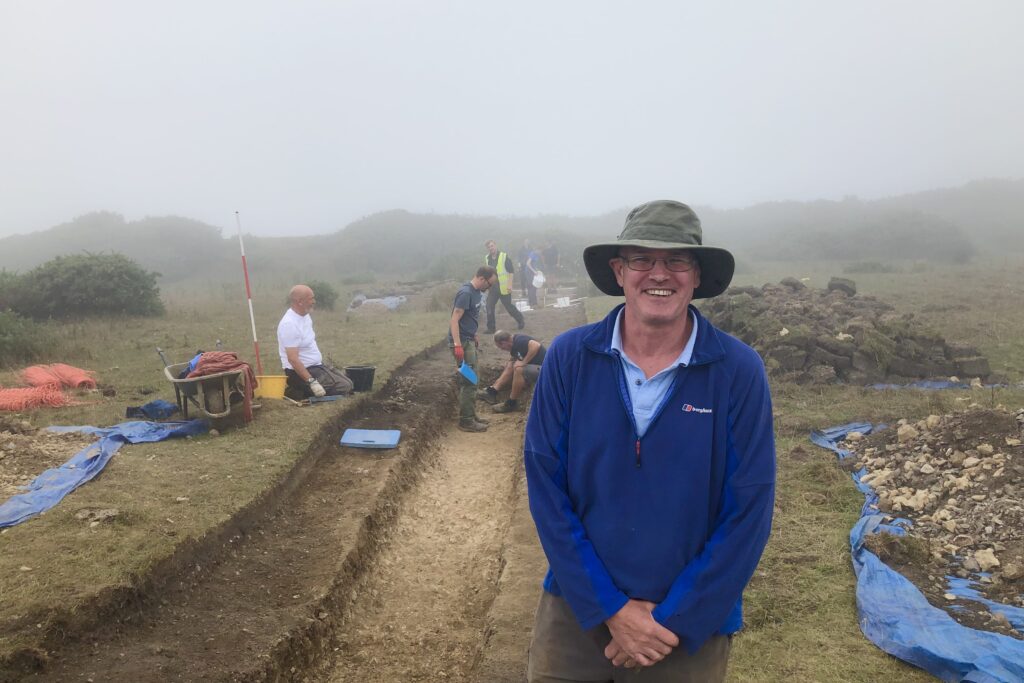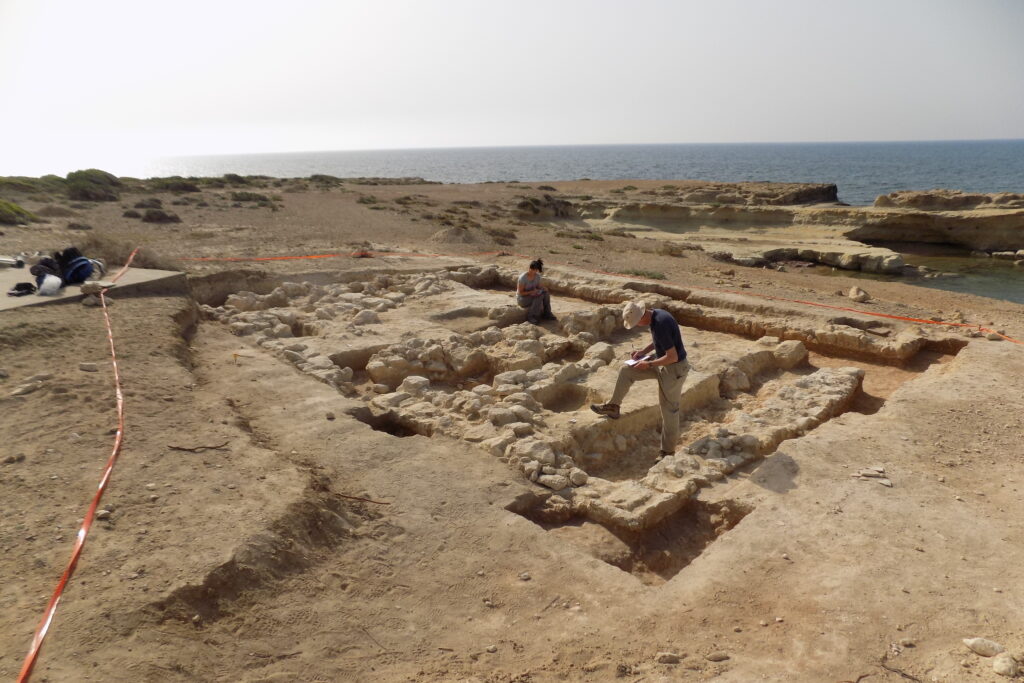
It’s been a vision of mine to have a ‘Historic Environment Record’ (HER) for the MOD since I first joined the department, so I’m delighted to share that we now have not only a fully functioning and accessible HER, but the world’s first online database of its kind!
Our new HER will revolutionise how we manage and preserve heritage across the Defence estate. It’s a powerful tool providing comprehensive access to mapping data, heritage records and condition surveys, and will bring greater efficiency to the management of over 800 listed buildings, 700 scheduled monuments and tens of thousands of archaeological monuments.
Journeying through time on the MOD estate
The MOD estate is home to a wide range of heritage spanning from prehistory to the present day. Salisbury Plain Training Area in Wiltshire has produced a palaeolithic bifaced axe, an Early Iron Age to Late Bronze Age midden with feasting debris up to 3m deep, a collection of Roman villages in the artillery impact area and is the site of a Battle of Britain Spitfire crash. Otterburn Training Area in Northumberland is home to a shrine to the Romano-British God Cocidius, which is carved into a rock high above a vale. A WW1 Anti-Aircraft Battery at DM Crombie, West Fife is one of only a handful of similar sites across the UK and the St Kilda historic landscape in the Outer Hebrides dates from prehistory to the 1930s, with mixed natural and cultural World Heritage Site designations.

The historic environment on our overseas estate is equally diverse, encompassing classical remains at RAF Akrotiri in Cyprus, Gibraltar Naval Base, and even Mayan Temples on the British Army’s training area in Belize.
Protecting and preserving our historic environment
The DIO Historic Environment Team (HET) provides expertise to help the MOD fulfil its responsibility in managing this impressive assortment of historic environment assets, which account for a valuable proportion of our national heritage.

We based the creation of the MOD HER on the Historic Buildings, Sites and Monuments Record database developed by Idox Software Ltd. The powerful database combines text records with a 3-D mapping system and a digital library, and features a global coordinate system which, in capturing MOD’s heritage responsibilities overseas, represents the world’s first global HER!

Gathering and using this intelligence, detective style, will enable the right decisions to be made to secure the MOD’s incredible heritage for future generations, while supporting those who live, work and train on the Defence estate.
10 comments
Comment by Stephen Harness posted on
An interesting article Guy, it would be useful if it stated where readers could access the "fully functioning and accessible HER".
Comment by DIO Communications Team posted on
Hi Stephen,
Thanks for your comment. Currently, access to the HER is only available to heritage management professionals in DIO’s Historic Environment Team. However, the team is exploring the potential for sharing a ‘read only’ view, which could be made accessible to wider MOD staff.
Comment by Maj David Puckey posted on
I administer the JSP 907 Guidance on the use of the DTE for training facilities, when you have a shareable read only link to the HER I would be happy to link it to the advice on historic conservation and the Catalogue of the DTE.
We are also working on interactive digital mapping of the DTE, the same base model Training Estate Viewer may be of use to you as well?
Comment by DIO Communications Team posted on
Hi Maj Puckney
Thanks for the offer! We can see your email address so we will pass this on to Guy.
Comment by B A GURUSWAMY posted on
Well done. Greatly appreciate it
Comment by Kate Doyle posted on
Really interesting article - would love to know if its possible to visit any of the sites where some of these fascinating things have been found?
Comment by DIO Communications Team posted on
Hi Kate,
Thanks for your interest! Many of these were excavated and then get covered over again, and in any case are on the training estate so are not generally accessible to the public unless the site is on a public right of way unfortunately.
Comment by Stephen Howard posted on
Hello, I'm preparing a presentation on aircraft hangars for the Royal Agricultural University. The Defence Estates Document Technical Bulletin 02/02 World War II Hangars - Guide to Hangar Identification (freely available on the web) has links to CAD drawings of each Hangar type (Bellman, Type T2 etc) but unfortunately these are 'dead'. Can you direct me? I'm sure you'd agree that these line drawings would make excellent identification aids. In fact I've seen something similar for medieval/Tudor buildings.
Comment by peter iles posted on
Hi we occasionally have enquiries relating to military heritage - we've got one at the moment relating to regimental houses, for disabled/returned veterans from an early C20th conflict - and it would be useful to have an email enquiry address for the DIO HER that we could copy such enquiries to, in case you have records of things we don't have on the county HER. Is it possible to send my email address on to the HER team and ask them to send me some appropriate contact details please?
Pete Iles, Lancashire County Council Historic Environment Team
Comment by DIO Communications Team posted on
Hi Pete, absolutely, we'll pass your details on.